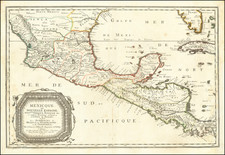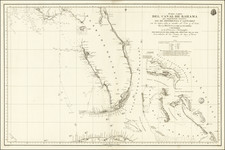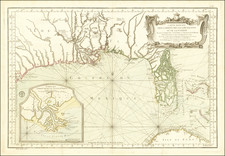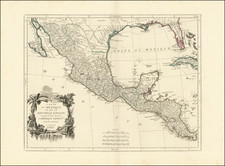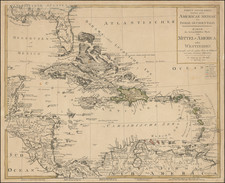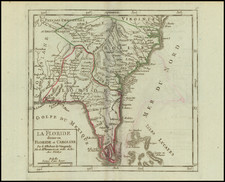Civil War Era Manuscript Map of St. Augustine, Florida
Remarkable large format hand colored map of St. Augustine, capturing a fine image of the town in the early days of the Civil War, shortly after the Union re-occupation of St. Augustine in March 1863. Drawn during a time period when St. Augustine was actively utilized by the Union Army as a hospital and convalescent camp for troops injured in Georgia and the Carolinas.
The map is oriented with north at the top and providces an exceptional overview of the town of St. Augustine during the American Civil War.
The map is illustrated with a detailed image of the lighthouse and lighthouse keeper's house and Fort Marion.
The inclusion of the hospital to the north of Fort Marion (Hospital 7th Connecticut Vol.) helps to date the map to the 1862-1863 period when a portion of the 7th Connecticut Infantry was garrisoned at St. Augustine. Further north, the entrenchments constructed by the 7th New Hampshire Volunteers to defend the city trom attack from the north is shown, split in two by the Jacksonville Road.
Behind the lines, the Court House and Plaza shown at the center of town, with Magnolia House on St George Street and Florida House on Treasury Street shown, along with several other buildings on the square. At the bottom center, a Wharf is shown, along with two buildings marked Q and M (Quatermaster). At the south of town, the St. Francis Barracks, Cemetery and Old Magazine appear. A Sea Wall and Water Battery on the east side of Fort Marion are shown.
The map would appear to have been executed on the spot by a skilled hand. Although apparently not an official map executed by a military engineer, the clean lines, use of symbols and general quality of the map suggest a skilled and deliberate hand.
Dating The Map
We believe the map was drawh prior to October 1863, as there is no evidence that the convalesent camp or barracks ordered on October 19, 1863 had been constructed and only the hospital appears on the map.
St. Augustine
St. Augustine, Florida was founded in 1565 by Spanish explorers and is the oldest continuously inhabited European-established settlement within the borders of the continental United States.
St. Augustine was founded on September 8, 1565 by Spanish admiral Pedro Menéndez de Avilés, Florida's first governor. The city served as the capital of Spanish Florida for over 200 years, until the British takeover of Florida. It was designated as the capital of British East Florida when the colony was established in 1763 until the the colony was ceded back to Spain in 1783.
Spain ceded Florida to the United States in 1819, and St. Augustine was designated the capital of the Florida Territory upon ratification of the Adams–Onís Treaty in 1821. The Florida National Guard made the city its headquarters that same year. The territorial government moved and made Tallahassee the capital of Florida in 1824.
7th Connecticut Hospital
Following the Union Army's taking of St. Augustine and environs in March 1862, the continuous patrols of the St. John’s River by Union gun boats reduced any Confederate activity on the east side of the river to small raiding parties. For this reason, St. Augustine and the surrounding areas experienced little hostilities for the remainder of the war. This made St .Augustine an ideal destination for Union regiments who were in dire need of rest and refitting after heavy fighting in Virginia and the Carolinas.
The following General Order from the Department of the South Headquarters on October 19, 1863.
GENERAL ORDERS, NO. 91. -- On the recommendation of the Medical Director, a convalescent camp or barracks will be established at St. Augustine, Fla., where, hereafter, all sick and convalescent officers and soldiers, requiring a change of climate "to save life or prevent permanent disability," will be sent.
Editors’ Picks
The 10 Most Checked-Out Books in N.Y. Public Library History
Real Men Don’t Rent
Florence Pugh’s True Hollywood Fairy Tale
Continue reading the main story
In the fall of 1863, St. Augustine became a convalescent camp. Rather than evacuating troops to the North, the army chose to send them to Florida. Florida had already gained the reputation as a winter health resort. Activity in town increased with the construction of a hospital. Many men found work in carpentry. Henhouse and garden owners found a market for their produce and the hospital became the focal point of local commerce and reviving the local economy.
St. Francis Barracks
St. Francis Barracks on Marine Street in St. Augustine, Florida, was named in honor of St. Francis of Assisi. The barracks were constructed between 1724 and 1755 by friars of the Order of St. Francis. The barracks were turned into a military structure by the British in 1763, after Florida became a British possession at the conclusion of the French and Indian War.
St. Francis Barracks came under control of the United States Army when the United States gained possession of Florida in 1821 and would remain an active U.S. Army installation until it was deactivated in 1900 (except for a 14 month period in 1861-62, when it was controlled by the Confederate States of America.
In 1828, a portion of the southern end of the St. Francis Barracks military reservation was set aside as a post cemetery. This cemetery would later be redesignated the St. Augustine National Cemetery.









